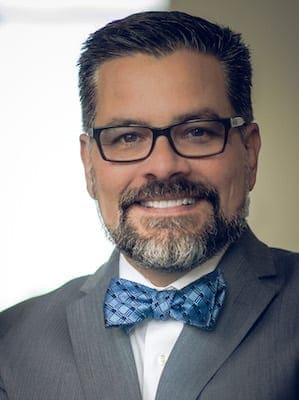The United Methodist Church addressed how its churches would relate to LGBTQ Christians this week.
In a 461-to-359 vote, the UMC’s legislative committee adopted the “Traditional Plan” on Feb. 25 for consideration at the 2019 General Conference’s final session on Feb. 26.
After significant discussion and debate, the Traditional Plan was passed by conference delegates on Tuesday by a 438-to-384 vote margin. It will now be reviewed by the UMC’s Judicial Council in April to ensure all aspects of the plan are constitutional.
This plan maintains a ban on ordaining LGBTQ clergy and permitting ministers to officiate same-sex weddings while strengthening an enforcement mechanism that requires UMC clergy and congregations to affirm the denomination’s position by 2021 or face removal.
Alternate proposals, voted down by the legislative committee in similarly close votes, would have allowed local UMC congregations to ordain LGBTQ clergy and perform same-sex marriages either by removing restrictions in UMC’s governing documents or leaving the decision up to local congregations.
Last year, the Cooperative Baptist Fellowship released its Illumination Report, opening the door for hiring LGBTQ Christians for employment opportunities. However, in an accompanying implementation procedure, the report said CBF would restrict LGBTQ Christians from certain employment openings.
These votes and reports follow debates in other denominations, which center around theological statements and relational practices toward LGBTQ Christians.
While the conversation has centered around particular brothers and sisters of our faith, there is a greater conversation that has emerged that very well might shape the future of the church.
The following questions are important:
- What kind of church do we want to be?
- Is God calling us away from our limited understanding of God toward new and exciting possibilities?
- Is the LGBTQ debate about sex or something else?
- How does the church want to be perceived by the world?
- Do we place more value on conversation than justice?
- Has conformity to traditional perspectives taken the place of ongoing conversion?
- And finally, what does this debate reveal about the growing divide between younger and older generations?
These questions speak to the very nature of the church’s ethos, revealing both the church now and the church yet to come.
As this divide continues to grow with each debate, each vote and each report, the church must ask a hard question: What will be the future of the church?
To approach this question, let’s revisit an important analysis and prediction made by the great Phyllis Tickle.
She wrote in her book, “The Great Emergence,” that the church was entering into its circular 500-year “rummage sale” period involving seismic shifts in doctrines, liturgies and practices.
Citing the rapid growth of Christianity under Constantine’s rule, the great schism between the Eastern and Western Churches and the European Reformation, Tickle concluded the church was entering into a new period of transformation. The future church was going to look a lot different than the one now.
Considering what is taking place across mainline denominations and certain parts of the evangelical movement, a few additional questions loom large:
- Is it time for the emergence of a comprehensive and collaborative new movement within the church?
- Will the church be relevant if it does not change?
- In the church’s history, what has always propelled it forward: stricter or broader ways?
As a Gen-Xer, I feel caught between two generations of the church.
There is the older generation, born and nurtured in modernity. Modernity gave us great theological insights and advancements, breaking down doctrines and practices into very distinct black-and-white truths.
Because of these conditions, the church often placed doctrine and conformity above all else. Why? If truth could be deciphered, then the “correct” relationships would be the natural outpouring for both faith and life.
But what if everything was not so black-and-white? This is the question being asked by emerging generations who see our pursuit to understand what is true, right and good as an ever-evolving process involving continuous conversion.
As a result, they place greater emphasis on what is tangible: people and relationships.
With this in mind, let’s return to the question: Is it time for a new movement within Christianity?
In reality, one is already underway. With the fading of one generation, a new generation will be taking its place that has new ideas and perspectives.
This does not mean one is better than the other, but rather points out the fact that the church is always transforming.
If this is the case, then what will this new movement look like?
Here might be some possible facets:
- Scripture is an authoritative guide for seeking justice in the world.
The Bible was inspired by God but written by humans. The Bible points readers to God’s redemptive love and hope for the world, but the book itself does not offer salvation or justice. It points us to both, which means the words must be lived out through our behaviors and actions.
- Christians are called to love.
Love is the central theme throughout the Bible. Both Old and New Testaments affirm humans need to love God and each other. These two actions are not mutually exclusive: To love God means to love others and to love others means to love God.
More than any other commandments, this is what Christians are called to do in this world. And, this type of love has no limitations. We are to love unconditionally, both friend and foe alike.
- All humans are made in the image of God and worthy of respect, love and justice.
If each person is a child of God, they possess a set of certain rights endowed by their creator.
Regardless of race, gender, cultural position, socioeconomic status, sexual orientation or gender identification, the church should love people as God does and should offer the same rights (and rites) to all.
- The complete affirmation of those called to serve.
Welcoming and acceptance are not enough for the new emerging movement. The church should work graciously and diligently to affirm each individual’s call for their lives.
If a person is welcomed into the body of Christ and makes a profession of Jesus, those two reasons alone should open the possibility of ordination (both to the diaconate and clergy).
Each church will serve as their own ordination council, determining their process and qualifications for church offices.
- Local church autonomy in collaboration with other churches.
Each church will seek to partner with other congregations, organizations and denominational bodies while retaining their autonomy.
They will have freedom and responsibility to determine their own theological convictions and practices, develop a liturgy based upon the dictates of their conscience, call their own ministers and directors and oversee their own administration and budget.
- Evangelism and social justice will be equal and central to the church’s mission.
Evangelism will no longer be solely focused on a colonial model of conquest and control. Evangelism and social justice will inform the work of the church, merging the importance of both the soul and body.
Evangelism will proclaim the word of God through acts that offer justice to the marginalized of this world, empowering them with hope that will lead to personal and social transformation.
There will be other indicators, but I believe some of these may be central to a new movement. The more the church strives to hold on to its past, the more the church changes one way or another.
Is it time for a new Christian movement?
Evidence seems to indicate one is already underway and will be led by the emerging generation. This new movement will bend toward God and justice, bending slowly at times but always bending from the results of radical love.


